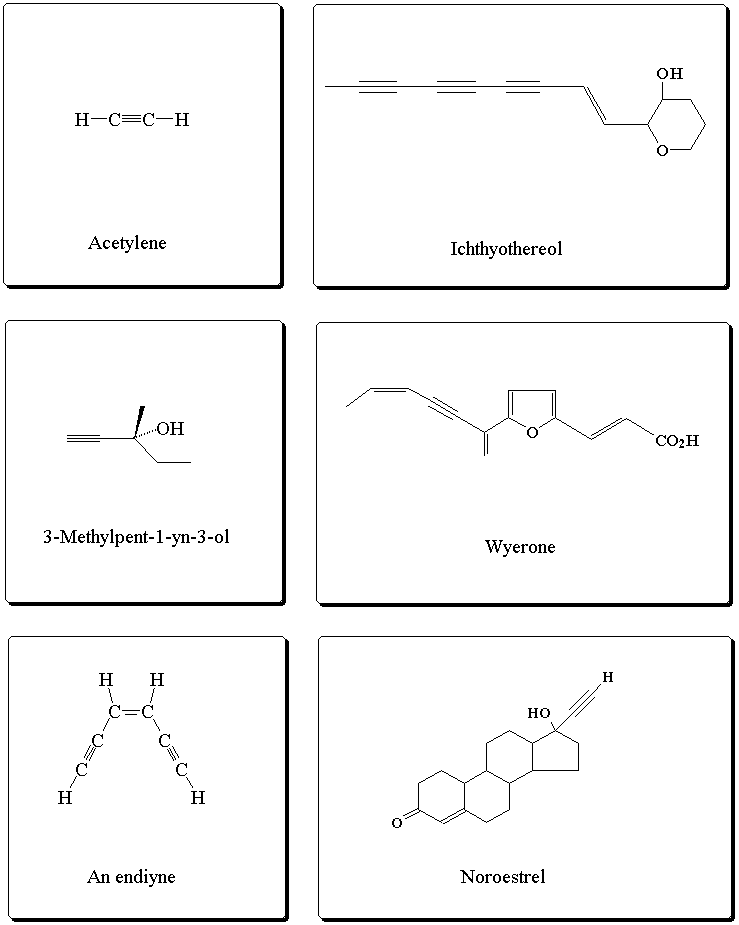ALKYNES
Reference: McMurry Ch 4, George et al Ch 1.2
Structure and bonding
- "Unsaturated" hydrocarbons
- Contain at least one Cº C group
|
|
Bond length |
Bond strength |
|
C-C |
154 pm |
356 kJ mol-1 |
|
C=C |
133 pm |
636 kJ mol-1 |
|
Cº C |
120 pm |
837 kJ mol-1 |
- Each carbon atom of the Cº C group is sp hybridized
- The sp hybridized carbon atoms are linear with bond angles of 180°
- The triple bond is composed of overlap of two sp hybridized orbitals to form a sigma (s ) bond and overlap of four p orbitals to form two pi (p ) bonds.

Nomenclature
Rules:
- Stem derived from the number of carbon atoms in longest chain which includes the triple bond
- Ending is yne
- Give triple bond lowest possible number
- Name the substituents as usual
- The simplest alkyne is called acetylene, H-Cº C-H
Example:

Stereoisomers are not possible as the functional group is linear.
- A triple bond at the end of a chain is called a terminal alkyne
Reactions of Alkynes
General type of reaction is an electrophilic addition reaction. Like alkenes, the electrons of the p bonds are available for reaction. As there are two p bonds the addition can occur twice.

- It is normally difficult to stop after the addition of one equivalent of reagent
- In the case of hydrogenation it is possible to isolate the alkene when a poisoned or deactivated catalyst is used.
- Terminal alkynes may also react like an acid in the presence of a very strong base.
1. Hydrogenation – addition of hydrogen.
- Require a catalyst (Pt/C or Pd/C) to help break strong H-H bond
- Form a saturated hydrocarbon from an unsaturated one
Example:

- Partial hydrogenation is possible if a poisoned or deactivated catalyst is used
- In the case of partial hydrogenation, (Z) alkenes are obtained from non terminal alkynes
Example:

2. Halogenation
- No catalyst required for addition of Cl2 or Br2
- Normally an excess of halogen is used to ensure complete reaction
Example:

3. Hydrohalogenation
- Excess HCl, HBr, HI
- Markovnikov’s rule applies with addition to a terminal alkyne
Example:

4. Acid-base reaction
- Terminal alkynes only
- Require a very strong base, usually Na+NH2– in liquid NH3 as solvent
Example:

Some interesting compounds containing the alkyne functional group:

Questions on Alkynes
Return to the Index




![]()




